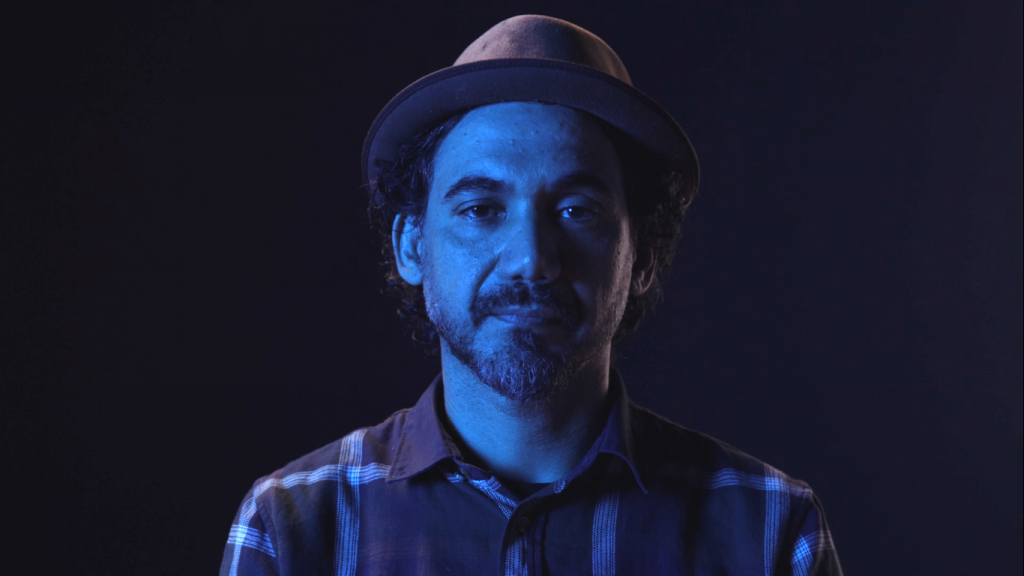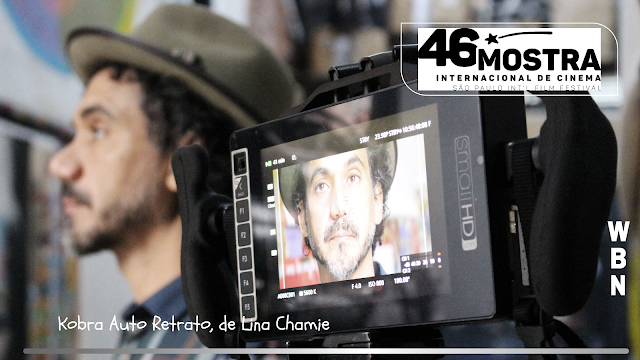I recently had the pleasure of watching Kobra Auto Retrato at the MOSTRA Brazilian Film Festival hosted at IUPUI by the Office of International Affairs (OIA). This experience turned into an intimate viewing with a phenomenal Q&A session afterward, during which I had the opportunity to meet Jefferson Pedace, the executive producer of the film, Luiz Costa Pereira, Jr., a prominent Brazilian journalist, and Ariani Friedl, founder and director of the Mostra: Brazilian Film Series.
Directed by Lina Chamie, the film provides viewers with a fascinating insight into the creative process and activism of Kobra, a world-famous Brazilian artist. The documentary chronicles his troubled upbringing as an impoverished child to his full-circle moment of returning to the school from which he was expelled, painting with the new students there. In between, we witness the expansive murals across the world that bear the distinctive Kobra signature.
Jefferson, Ariani, and Luiz were all charming, encouraging viewers to engage critically with the film. They welcomed questions about this labor of love. I raised my hand, hyperfocused on the most fascinating aspect of the documentary film: the discomforting close-ups.
The film employs lingering, intimate close-ups of Kobra. These shots zoom in achingly slow, closing around the muralist’s face. These sequences are accompanied only by silence, demanding that viewers sit with the discomfort. This pattern recurs throughout the documentary. After Kobra finishes a thought or the scene returns to his in-home interview, the audience is left with the uncomfortable intimacy of his close-up. It resembles the intimacy exercise that couples are sometimes tasked with, where they sit down together, lock eyes, and maintain the gaze for a few minutes. No words, no shared activity to mediate—just gazing into one another’s eyes. Despite their feelings for each other, many couples find this level of intimacy too disquieting and vulnerable, making it challenging to sit meaningfully in this way. I experienced the same feeling when I deliberately resisted looking away from Kobra’s gaze. I found it intriguing that I felt so uncomfortable simply staring into his eyes in the film.

In the film, Kobra states that he is uncomfortable with self-portraits, emphasizing that his personality and soul are expressed through his street portraits and murals. He has never desired to create his own self-portrait, nor does he seek portraits from others. This explains the plain and unmistakable discomfort evident on his face during these intimate close-ups. However, that was only half the experience. Jefferson explained that they wanted the viewer to truly feel what Kobra was experiencing. The executive producer revealed that the deliberate cinematic choices in the close-ups were there to mirror Kobra’s experience within the viewer. Kobra’s discomfort extends beyond the camera close-ups, employing a cinematic form of spectatorship where the viewer mirrors Kobra’s unease.
This was the most powerful aspect of an already impactful documentary. Kobra’s story is inspiring, his activism is encouraging, and the cinematography of the film is top-notch. The documentary features a love story, engaging soundscape, and showcases plenty of Kobra’s renowned artwork. However, the cinematic close-ups on Kobra, the way they mirror his discomfort, and engage the viewer in a form of spec-acting – this is the brilliance that film schools dream of. It is my hope that this technique will take its rightful place among film schools across the globe, mirroring Kobra’s artistic success.

Comments